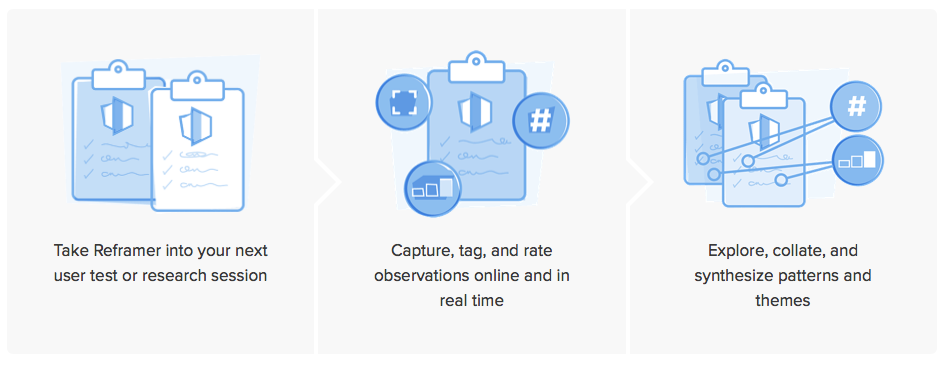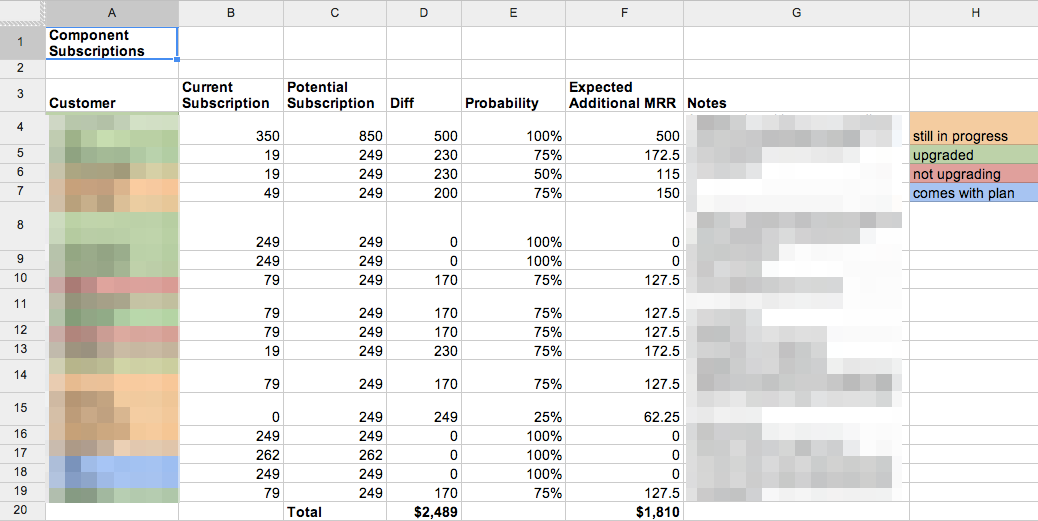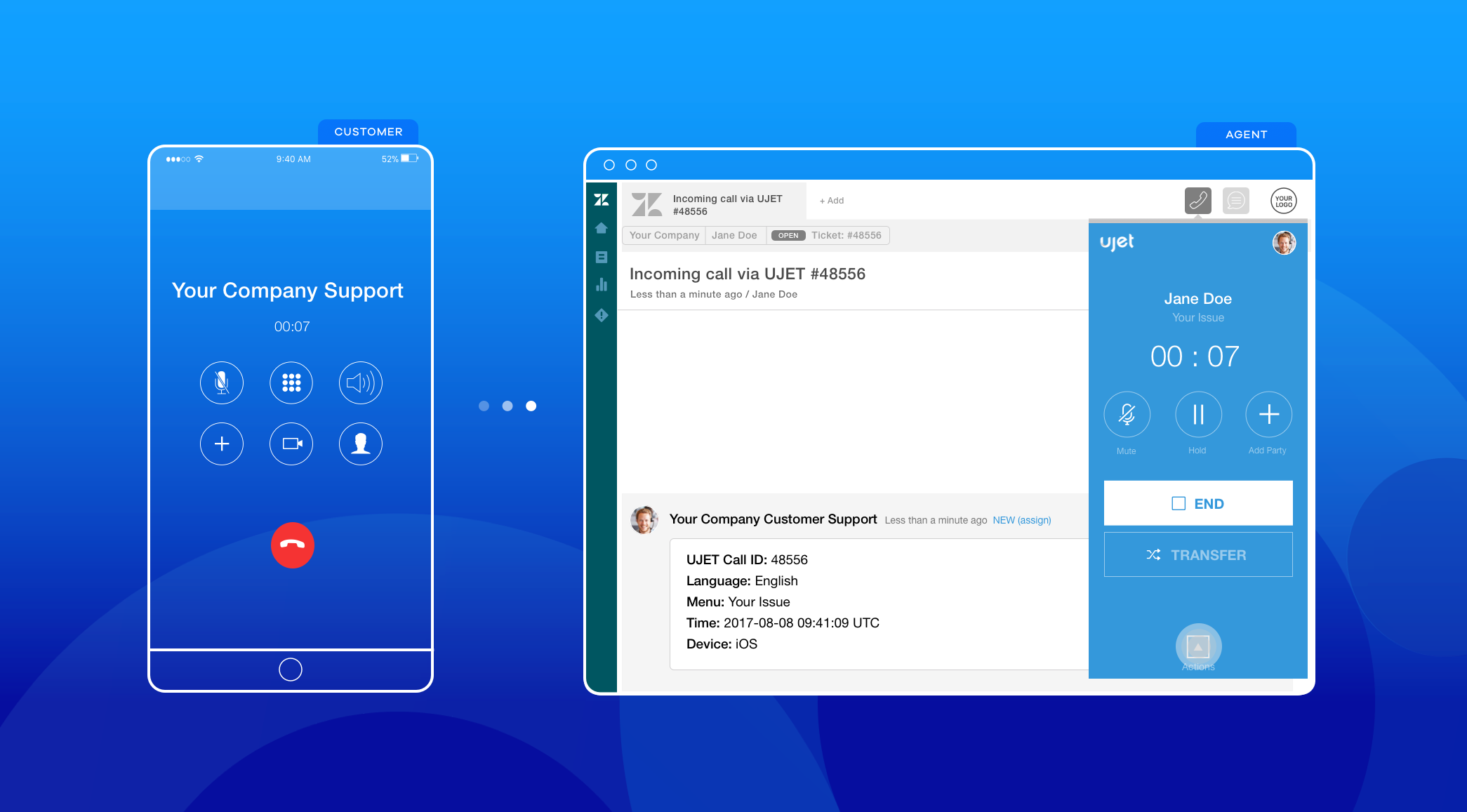Stay updated!
The best customer experience content delivered right to your inbox.
5 Ways to Modernize Your Customer Support for a More Personal UX
by Mike Dupuy |
Until recently, it was assumed that technology would replace people in customer support. Now it’s clear that technology alone isn’t enough.
Modern customers want the organizations they work with to be their advocates, to be accountable and proactive when it comes to their needs and goals. Customers want their experience with a brand to be personalized and intimate. They want to feel distinguished. You don’t get that from technology; you get that from people.
Modern support needs the human element. It needs real people using technology to make them faster and more knowledgeable, better.
Customers want to speak with real people again. They want to call customer support and hear a real voice on the other end. They want to open a chat box and see a real name in the corner—because the human element provides a sense of calm and security, trust that everything will be alright.
People elevate the customer experience
Given the diminishing returns of technology, customer experience is now a great differentiator among companies.
A helpful, engaging, modern support team will delight customers, mitigating churn while driving new business. Therefore, companies that invest in their CX teams are investing in their customers’ success as much as their own.
Want to modernize your customer support?
Here’s how to start:
1. Understand your customers and their individual journeys
Context is king. That is, when you arm agents with general and specific information about customers and their needs, it enables them to begin resolving problems right away:
- On a large scale, via a customer profile
- On an individual scale, via specific personal data
By pushing as much information forward as possible—in the form of a complete customer profile (e.g. a customer who wishes to return an item or a prospect inquiring about a particular product)—modern CX departments are giving their frontline team members a deeper understanding of their customers, enabling them to understand problems and offer solutions at scale. This means that when the real person gets on the call with the customer, they are able to offer personalized solutions immediately, without a back-and-forth to gain the knowledge they should already have.
Map out your customer journey.
A customer journey map outlines a customer’s history with your company, everything from initial contact onward.
It’s an account of every user interaction—an overview that records the customer’s questions, comments, and feelings in an accessible and chronological snapshot. A journey map is an insightful tool used, among other ways, to provide CX agents with quick context.
Mainly, it identifies gaps in the customer experience—points that are painful or disjointed. This information helps customer support agents personalize each interaction as they work to solve the problem.
Creating a customer journey map boils down to two types of research:
- Analytical: This involves collecting and organizing specific data about users, including how users found your website, where they clicked, and how long they stayed. Feedback surveys, for example, can bring UX problems to the surface while helping CX leaders understand their CSAT and NPS score.
- Anecdotal: This involves listening to users’ personal stories, which your salespeople and customer support team can solicit over the phone, on social media, or via chat.
Using a qualitative research tool, like Reframer, will help you collect, discover, and share the information you gather.
 Image source: Optimal Workshop Ltd.
Image source: Optimal Workshop Ltd.
Qualitative research tools make it easier to capture and record observations from testing sessions, focus groups, and anywhere else you communicate with users—and the process is fairly straightforward:
- Schedule a video or phone call with a user to perform a feedback session about your product and their overall user experience. To elicit the best possible answers, ask clear, concise, open-ended questions.
- Record the answers in real time using the distraction-free interface available in Reframer or a comparable research tool.
- Share your answers with your team, exploring data from multiple sessions in one place, which simplifies the task of discovering trends and creating themes.
The process will give you insight into your customer’s needs both on an individual basis and at a high level.
2. Give Customer Support a seat at the table
When you consider who at your company has the best relationship with customers—the most well-rounded view—it’s not your salespeople or your marketing team. It’s your customer support and success staff.
These employees have garnered the most interactions with customers over time, playing a key role at every stage of the customer journey. Support deserves to be empowered alongside Sales and Marketing because it knows your customer base best—certainly well enough to inform high-level decisions that are destined to give customers a more personalized, more distinguished brand experience.
Ultimately, when companies make product and process choices, the customer experience must be taken into account—and strategic input from Support will ensure that this happens.
Embed a customer support rep into your product team.
Great products are the consequence of objective information, which is impossible to amass in a silo.
Lending CX expertise to the product development process ensures that there’s a customer champion involved in every meeting, every discussion. It ensures that the customer’s perspective—her needs and desires—are incorporated into every decision.
Embedding a customer support rep into your product team is a process:
- Pick the right person, someone with deep customer support experience. Someone who understands your product, its strengths and weaknesses. Someone who genuinely cares about helping people find success in a meaningful, personal way.
- Start them slow, asking the embedded team member to focus on acclimating to the people and processes in their new environment. At first, it’s important to adjust—and the fastest way to do so is by asking questions and listening.
- Ramp them up over time, incrementally including the embedded rep in every meeting, stand-up, and emergency with the intention of lending an objective voice to the customer.
Ultimately, this process drives better product knowledge to engineering teams and better engineering knowledge to support teams, which is proven to improve user issues and, in turn, boost customer adoption rates.
3. Tread lightly with AI
First of all, AI isn’t meant to replace your CX team. It’s meant to help your frontline people, to support them in creating scale.
These technologies won’t differentiate your company but they will distinguish your people, enabling them to provide remarkable support, the kind people remember, talk about, and come back to time and again.
Purely automated customer support (e.g., chatbots) aren’t a CX silver bullet for every organization, mainly because these systems demand a tremendous amount of data in order to set good rules and make truly helpful decisions. This point makes automation a risky play for smaller, less data-rich companies.
It’s also all the more reason to invest in tools that work in tandem with humans, not instead of them.
Allow preemptive actions.
While it doesn’t yet make sense for artificial intelligence to assume control over the customer experience, there is a case to be made for allowing AI to anticipate specific customer needs from previous interactions, like chat histories and personal preferences.
An AI-integrated system can capture and use this customer data to provide customer support agents with:
- Proactive alerts (e.g., “Something’s off! We better reach out to make sure everything is OK.”)
- Callback options (e.g., “Your wait time is approximately 4 minutes. Would you like to wait or recieve a callback?”)
- Customer behavior patterns (e.g., “John Doe has called in regarding connectivity issues four times last month.”)
- Real-time support assets (e.g., “Here’s a link to FAQs, reports, and articles Jane Doe may find useful.”)
These and other preemptive actions will work to minimize complaints and abandonment rates by helping CX agents deliver faster, more informed support. When people stand on the shoulders of technology, agile support ensues—and that can make all the difference.
4. Obsess over UX
Good customer support is reactive. Great customer support is proactive, which is achieved through outstanding UX, or user experience.
“User experience encompasses all aspects of the end-user’s interaction with the company, its services, and its products,” writes Jakob Nielsen of the Nielsen Norman Group. “The first requirement for an exemplary user experience is to meet the exact needs of the customers, without fuss or bother.”
This result is the product of knowledge and iteration, testing. Great UX anticipates user pain points and works to fix them proactively. In other words, great UX is about creating an effortless process, something simple and elegant and seamless. Something that puts people first.
In theory, great UX eliminates the need for support altogether—because the best customer support means not having to provide any at all.
Enable an airtight feedback loop.
All great products have something in common: they’re the consequence of a tight and continuous feedback loop.
When customer feedback—be it user errors, product issues, or bugs—ceases to reach your product team, progress stops.
Luckily, setting up the loop is a fairly straightforward process:
- Collect user feedback. You can do this the old-fashioned way, collecting stories and anecdotes over the phone or even in person. Or you can lean on quantitative data, like website navigation history, email surveys, and time-on-page engagement metrics.
- Funnel feedback to the product team. You can organize data into a weekly or bi-monthly report that gets distributed to the product team. Or, if a piece of feedback is urgent, you can relay it using any number of agile communication tools, from Slack to Trello.
- Loop back to customers. After the product team has taken in your feedback, you must close the loop. That is, let customers know that you’ve listened and taken action. This is particularly important if your feedback came from an individual—rather than a data set—in which case you can reach out via the initial engagement channel.
A continuous feedback loop is great for the product team and customers, as it lets them know you’re hearing their voice. Customers love to be heard—and companies that make it a point to listen and implement feedback are planting seeds of growth.
For example, at Statuspage, an incident communication tool, when enough customers ask for the same specific feature, the team works to quantify the MRR growth that they expect to achieve from it:
 Image source: StatusPage.io
Image source: StatusPage.io
If it’s significant enough, they build it. They do this with every feature in their backlog, letting the potential MRR inform the direction they take.
Ultimately, working backward in this way is an example of how listening to your customers will both make them happy while helping to grow revenue.
5. Meet your customers where they are
There’s no such thing as an ideal communication channel when it comes to customer support. There’s no golden rule, no hard-and-fast method that reigns supreme. Instead, there’s a simple, infallible principle: meet your customers where they are.
That is, give people support where it’s most convenient for them. Most often, this takes place via chat or over the phone because these channels are the most personal, the fastest avenues to speaking with a real human in real-time.
The modern expectation is that customer support be readily accessible, available, and individualized—and the onus is on companies to meet it.
Provide your customers with options.
According to the Aberdeen Group, providing consistent quality service across multiple channels helps companies retain nearly 90% of their customers, which is why organizations are investing in providing their customers with a CX option, choice.
Customers want the ability to reach support over the phone, online, or directly inside an app:
- Voice: A voice diagnostic packet gives the support rep immediate context, including who the customer is and why they’re calling, which eliminates the age-old, “Hello, how can we help you?” mantra.

- Web: A web chat solution provides on-demand and multi-channel interaction, with access to Smart Actions for a clean, seamless experience.

- App: A diagnostic packet also receives other pertinent information, including the customer’s location, phone battery life, and the type of device they’re using to run the app.

Personalized CX is your competitive advantage
Modern customers want personalized support. They want an intimate, human experience that meets their needs as individuals. This can only happen when real people provide technology-driven support. Support that’s fast and informed, like a machine, yet engaging and understanding, like a person.
Combining these elements provides users with the best of both worlds, making for a truly distinguished customer experience.
Personalized CX is your competitive advantage in a crowded and ever-growing market.
Embrace it — and customers will embrace you back.
The best customer experience content delivered right to your inbox.